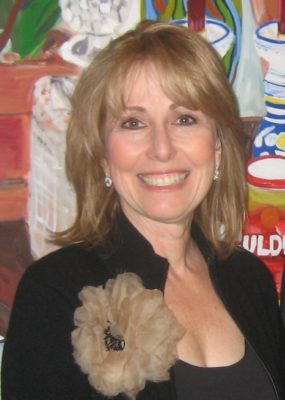 By Regina Gil
By Regina Gil
The summer of 1969 was a turbulent time of political unrest and social change, but it was also a time of optimism, as the ideals of peace, love, and unity were embraced by the younger generation, to which I then belonged. Our nation was moving forward after the shocking 1968 assassinations of Dr. Martin Luther King, Jr. and Robert F. Kennedy. As a new college graduate with a degree in art, I was enjoying my last summer before starting work as a staff illustrator for the American Institute of Physics. On July 20, 1969, I was on the road, traveling to get to my parents, who were vacationing upstate. We were expecting to get there in time to watch the moon landing together. But, between subway delays followed by standstill traffic, we began to realize that we would probably not make it. We pulled off the road and found a country bar and grill, where we hoped to find a phone to let my parents know about our delay (this was way before cell phones) and a television. As we entered, there was a crowd of people standing around a black and white television mounted up behind the bar. Before we knew it, we were part of that crowd of people as we all stood quietly and anxiously waiting for Neil Armstrong to make history, to take that first step onto the moon. When he did, a loud cheer went up; there was a lot of hugging. After he spoke the words that have since become immortal, “one small step for a man; one giant leap for mankind,” strangers talked, laughed and became family, energized and suddenly hopeful for a bright future. After all, we were all just one group of earthlings now.
A few weeks later, in August, another event occurred that would redefine our times; that was Woodstock. Woodstock was supposed to be a music festival and was billed as being about peace, love and music. But it became much more than that. It became emblematic of a generation of young people, nearly half a million of them, who descended upon a huge, rural field surrounded by the hills of a dairy farm located in Bethel, NY. Emerging rock musicians like the Grateful Dead, Jimi Hendrix, Janis Joplin, Holding Company, Joe Cocker and folk singers like Richie Havens and Joan Baez and so many others took to the stage for three days and nights of performance. The local residents were resistant at first, and government officials, both local and state (including then Governor Nelson Rockefeller) tried to shut it down. The sheer unanticipated numbers shut down roadways and major thruways and challenged the medical, social, health and food services that had been planned. Radio announcements urged people to stay home.
The conditions were poor; organizers were not prepared for the massive influx of people and gave up on selling or collecting tickets. There were food shortages, deplorable sanitary conditions, and to add to the mess; the weather went from hot and sticky to rainy and muddy that weekend. Amazingly, there were no deaths, no crimes and no arrests. Four hundred thousand people gathered and did not fight or get violent in any way. It was inspiring and educational for those who attended, for the residents of the rural community who gathered together to provide food and other services for these young people and for the rest of the country. The huge crowd was there to spread the word about love and peace, and somehow, there was unity. Woodstock became another occasion where strangers became family.
So what do these disparate events, one based in science and mathematics and the other all about the arts and music, say to us now, 50 years later? Did the summer of 1969 set us on a path of love, peace, and unity? Did it define who we are today? Or were these events tantalizing peeks into a world that did not evolve into the utopian dream that existed for a moment in history, but that can still remind us of what is possible when we work together creatively toward a common goal.
 In addition to leading the Gold Coast Arts Center, Regina Gil is a professional painter and sculptor whose work is exhibited in many collections. She has been a recipient of the Eleanor Roosevelt Award from the American Jewish Congress Women’s Commission for Equality as well as many other honors over the years. Gil earned her Master of Arts degree from Adelphi University.
In addition to leading the Gold Coast Arts Center, Regina Gil is a professional painter and sculptor whose work is exhibited in many collections. She has been a recipient of the Eleanor Roosevelt Award from the American Jewish Congress Women’s Commission for Equality as well as many other honors over the years. Gil earned her Master of Arts degree from Adelphi University.


















